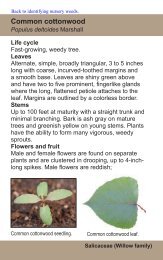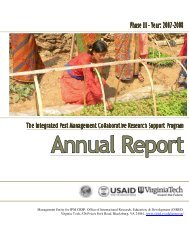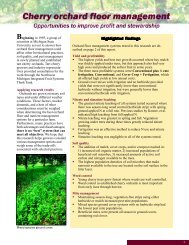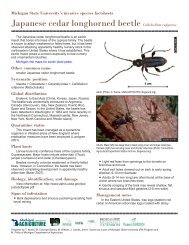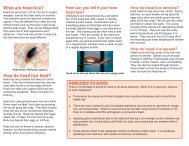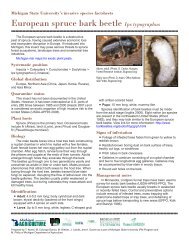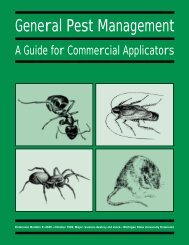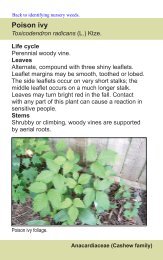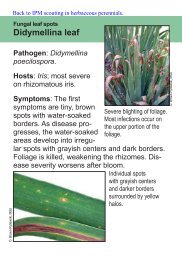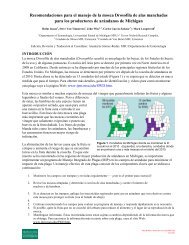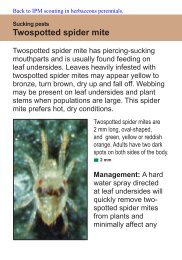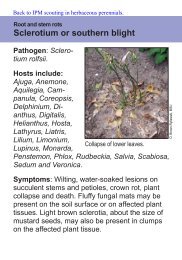Whole Manual - Michigan State University: Integrated Pest ...
Whole Manual - Michigan State University: Integrated Pest ...
Whole Manual - Michigan State University: Integrated Pest ...
Create successful ePaper yourself
Turn your PDF publications into a flip-book with our unique Google optimized e-Paper software.
STEWART’S WILT<br />
DISEASES OF CUCURBITS (cucumbers,<br />
melons, pumpkins, squash)<br />
ALTERNARIA LEAF SPOT<br />
Corn leaf showing symptoms of Stewart’s wilt.<br />
Pathogen type: bacterium (Erwinia stewartii)<br />
Disease symptoms: Symptoms appear first on leaves and<br />
are more severe on young plants than on older plants.<br />
Pale green to yellow streaks with irregular margins<br />
extend the length of the leaf and turn brown. Infected<br />
young plants may show brown discoloration; cavities<br />
may form in the center of the stem near the soil line. If<br />
plants are infected after tasseling, leaf lesions develop.<br />
Light green to yellow, water-soaked streaks with wavy,<br />
irregular margins are formed parallel to leaf veins. The<br />
streaks turn tan, enlarge and coalesce (merge) with age,<br />
resulting in blighting. When these leaves are held up to<br />
the light, insect feeding scars can be observed in these<br />
lesions. The bacteria spread through the host via the vascular<br />
system and may enter the kernels. When infected<br />
stalks or leaves are cut open, droplets of yellow bacterial<br />
ooze may extrude from the vascular tissue.<br />
Environmental conditions favoring disease: The bacterium<br />
overwinters in corn flea beetles and is spread to corn<br />
when corn flea beetles feed on corn plants. (Corn flea beetles<br />
carrying the bacterium can be expected if the sum of<br />
the average monthly temperatures [in degrees F] for<br />
December, January and February exceeds 90 degrees.)<br />
Stewart’s wilt is most severe when temperatures are high<br />
(88 to 98 degrees F).<br />
Control strategies:<br />
■ Plant resistant hybrids.<br />
■ Control the pathogen vector, corn flea beetles.<br />
Alternaria causes leaf spot.<br />
Pathogen type: fungus (Alternaria cucumerina)<br />
Disease symptoms: Small, circular, tan spots with a concentric<br />
ring pattern form on the leaves. Spots coalesce,<br />
causing defoliation.<br />
Environmental conditions favoring disease: The disease<br />
develops best under bright sunshine, frequent dews or<br />
showers, and temperatures between 60 and 90 degrees F.<br />
Fungus spores are spread by rain, wind, and splashing<br />
water. The fungus overwinters on and in seed, as well as<br />
in residue from diseased plants.<br />
Control strategies:<br />
■ Destroy volunteer cucurbit crops and weeds that<br />
may harbor fungal spores.<br />
■ Practice crop rotation out of cucurbits to reduce the<br />
risk of Alternaria leaf spot and other diseases.<br />
■ Apply fungicides as needed.<br />
Vegetable Crop <strong>Pest</strong> Management 67<br />
Chapter 7



